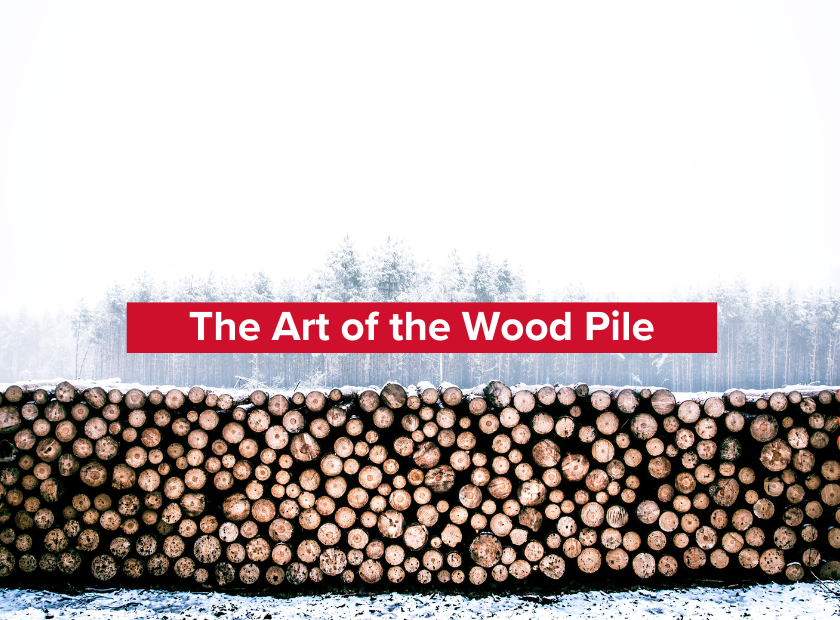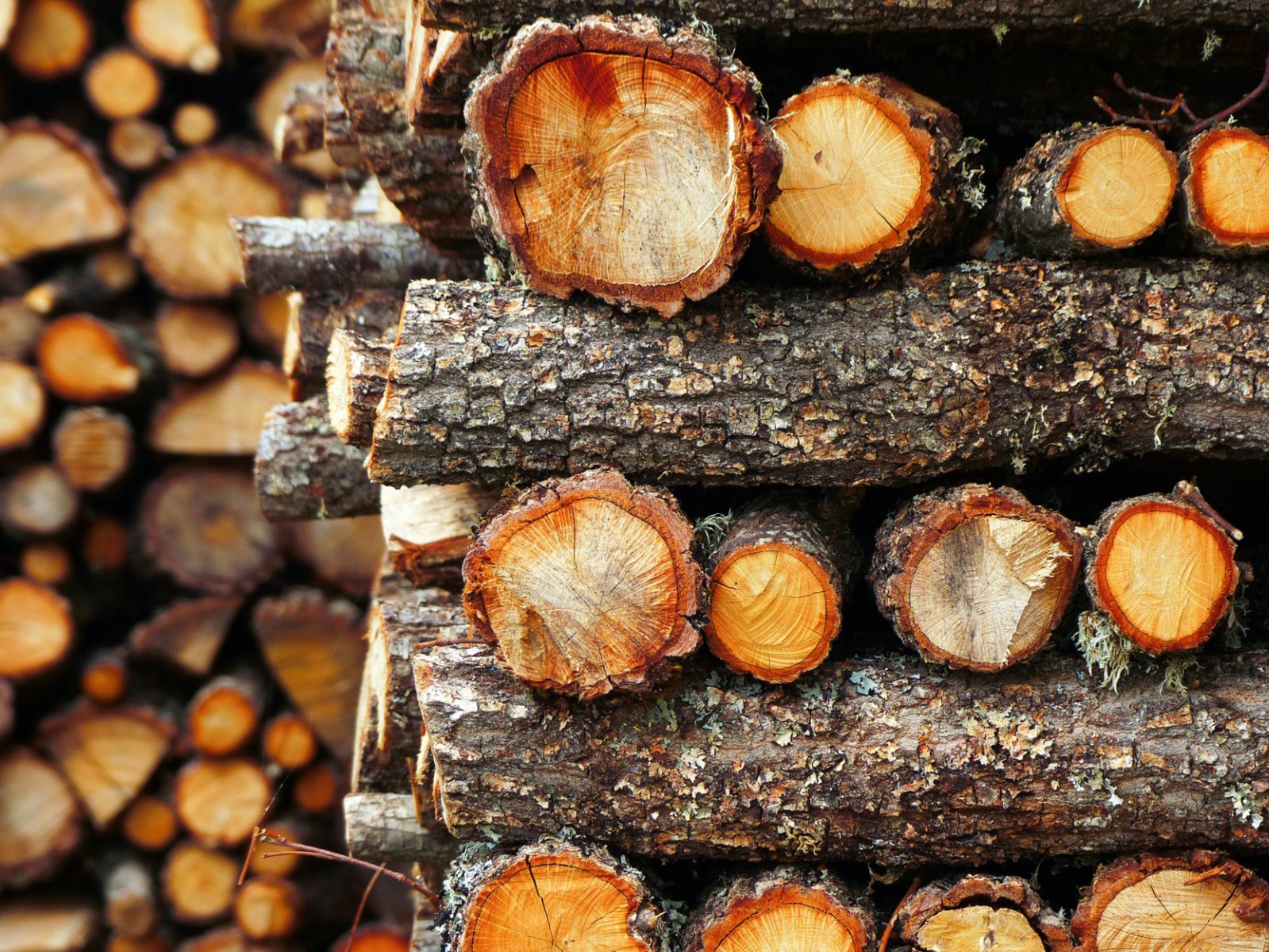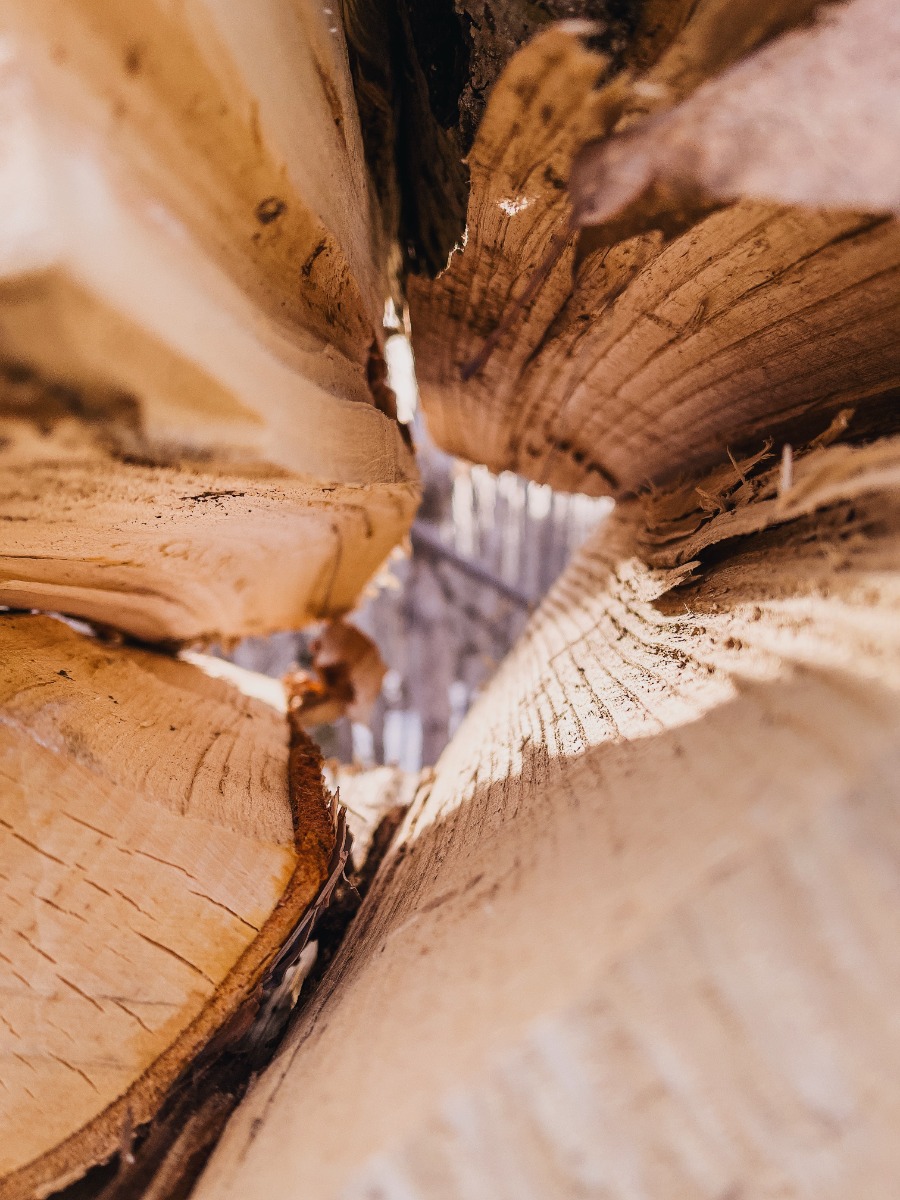The Art of the Wood Pile

Cold weather has finally arrived on the Bruce Peninsula, and we have seen the first flecks of snow for the season. Winter coats are out of storage, and as you drive through the little town of Wiarton, you can spot trails of smoke drifting above the rooftops as wood stoves brought out of retirement are happily chugging away.
Fall on the Bruce Peninsula brings the most gorgeous autumn colours mixed with the deep blues and greys of Georgian Bay, but it also brings the sound of axes and chainsaws put to good use. Logs are cut, hauled, split, and stored in preparation for another cold winter, with hopes that the wood pile will stay well-stocked until spring.
Style and Function Go Hand in Hand
There is an art to piling wood, as surprising as that may seem. Styles change from country to country, showing the unique individuality and culture behind this yearly tradition. With each style, however, comes special techniques to allow for proper drying, ventilation and safety.
Discover some of the more common stacking methods around the world;
American Stacking Method- Vertical and horizontal layers allow for proper airflow and stability when stacked.
German Stacking Method - Wood is placed in a circular pattern with layers of horizontal logs used for stability, resembling the look of a beehive. The centre remains open, allowing for increased airflow.

Criss-Cross Stacking Method- Just as the name suggests, firewood is placed in a criss-cross pattern, allowing air to circulate evenly between the logs and dry quickly.
Log Cabin Stack Method- Like the criss-cross method, logs are interlocked in a cabin-like pattern, creating a stable structure.
Moisture Prevention is Key!
We’ve all been there… trying to coax a fire to life with damp kindling or logs, and watching each match and flame fizzle out before you know it. Moisture can quickly become trapped and impact the integrity and quality of the wood you are using. By stacking wood in a way that allows for airflow between each log and between each pile, you are well on your way to having quality wood available all year round.
Need to use a tarp? No problem! Place the tarp over the wood pile while keeping the sides exposed. This will prevent any further moisture from seeping down into the pile while maintaining proper ventilation.

Does the Type of Wood Really Matter?
It’s safe to say that the answer is yes, but why? As a type of wood can alter how a piece of furniture is made or impact how a home is built, the quality of wood used in a wood stove affects the quality of the fire and overall burn time.
While everyone has their favourite types of wood, we’ve taken a deep dive into why some woods burn better than others. Take a look!
The Best Season
For many, wood stove season is arguably the best time of the year. With a fire crackling away in the wood stove, a good book by your side and the sights and sounds of winter only a reminder of the chilliness of the season, a wood stove brings a deeper level of heat, warmth and comfort.
The team at Ecofan may also be a tad biased, as this is the time of year when Ecofan is brought out of storage and set on the wood stove, ready to help circulate warm air into every cold corner of the room.
We are committed to quality and have 29 years of experience to stand behind. We’ve made it our business to bring warmth to homes around the world, and with Ecofan we have done just that.
Chop less wood this season and rely on Ecofan.






